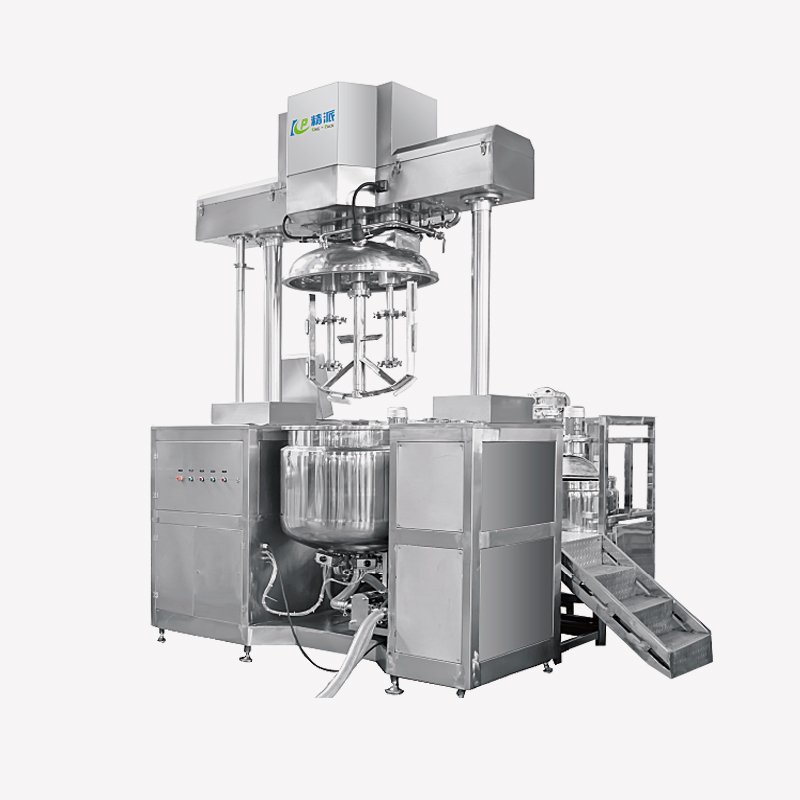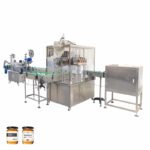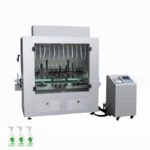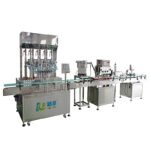When we are working with liquid ingredients, we typically have two things happening: homogenization or emulsification. And these processes may sound similar initially but if we look closer, we can see they are different.
Knowing such process differences is necessary if you’re working in cosmetic, food, or pharma industries. Since the process you select directly impacts product overall stability, texture, and shelf life. And selecting the wrong process can result in problems like waste, separation, or low quality.
Why These Processes Are Often Confused
Homogenization and emulsification are often confused because both processes are used to reduce particle sizes and create uniform mixtures. Their goals, however, are different:
- Homogenization focuses on achieving consistent droplet sizes, improving creaming stability, and enhancing overall homogenizing performance.
- Emulsification blends two immiscible liquids, typically oil and water, into a single homogenous mixture.
Both processes use specialized homogenizer machines, high-pressure homogenizers, or rotor-stator homogenizers, which handle liquids in mixing chambers. Choosing the right process impacts product quality, shelf life, and compliance with industry standards.
Applications in Foods, Cosmetics, and Pharmaceutical
Both methods are widely used in industries that rely on precise control of texture and stability.
- Food homogenization improves milk, sauces, dressings, and beverages by creating smooth and stable products.
- Cosmetic emulsification helps in making creams, lotions, and gels where oil and water must remain blended.
- Pharmaceutical homogenization is used in suspensions, syrups, and injectable products for uniform distribution of active ingredients.
In each case, the choice between a homogenizing machine and an emulsifying machine makes a clear difference in how the final product performs.
Key Differences Between Homogenization & Emulsification
Though they are similar, the two processes differ in particle behavior, stability, and equipment required.
Difference 1: Particle Composition and Size
Although they appear similar, homogenization and emulsification differ in particle sizes, stability, and the homogenizing system or emulsifier machine required.
Difference 1: Particle Composition and Size
Homogenization works on already mixed materials. It reduces particle sizes and disperses them evenly using high-pressure homogenizers or rotor-stator homogenizers. The composition remains the same but becomes uniform at micron or sub-micron scales.
Emulsification, on the other hand, starts with two immiscible phases, such as water and oil.
Using high-shear mixers, vacuum emulsifying mixers, or other homogenizing devices, these phases are forced into a single stable product with droplet sizes typically ranging from 0.5 to 50 microns, depending on the formulation and equipment.
Difference 2: Stability and Separation
Homogenized products may separate over time, even with smaller, uniform particle sizes, because the mixing does not chemically stabilize the components. The process, often achieved using a homogenization device or high-pressure homogenizer, relies on mechanical forces like centrifugal force or a homogenization valve to reduce particle size.
In some applications, such as cell lysis or cell disruption in biotech, homogenization ensures fine dispersion but does not prevent later separation.
Emulsified products, on the other hand, are stabilized by emulsifying agents and maintained using high-shear mixers or vacuum systems in the mixing chamber. This combination of mechanical and chemical stabilization allows emulsions to remain uniform for months or even years, depending on the formulation.
Storage requirements differ as well: homogenized products sometimes need light stirring before use, whereas emulsions are designed to stay fully mixed without additional handling.
Difference 3: System and Equipment
Homogenizers rely on mechanical force. High-pressure homogenizers or piston pumps push liquids through narrow valves at high speed, breaking down particles efficiently in short bursts.
Emulsification combines mechanical and chemical action. High-shear mixers, rotor-stator homogenizers, and vacuum emulsifying mixers disperse materials while emulsifiers provide chemical stability. Temperature regulation and controlled shear energy are often required.
Energy use differs as well: homogenization applies intense energy briefly, while emulsification may involve sustained mixing over longer periods.
The following is a brief comparative table that shows the principal differences:
What Is Homogenization?
Definition and Principle of Homogenization
Homogenization is the process of breaking down particles in a liquid so they are evenly distributed. The goal is to achieve consistency in texture, stability, and appearance. A homogenizer works by applying pressure or mechanical force that forces the liquid through narrow openings, reducing particle size and creating a uniform mixture.
This method is especially valuable when different densities exist within the same product. By reducing particle size, the mixture becomes stable and separation is minimized.
Applications in Different Industries
- Food industry: Milk, juices, sauces, and dressings benefit from smooth texture and extended shelf life.
- Pharmaceutical industry: Suspensions, vaccines, and oral liquids need uniform distribution of active ingredients to keep quality and effectiveness.
- Cosmetic industry: Lotions, shampoos, and gels require consistency to improve the user experience.
- Chemical industry: Adhesives, paints, and industrial emulsions rely on homogenization for stable performance.
Equipment Example: Industrial Homogenizer
An industrial homogenizer is designed for large-scale operations where consistent particle reduction is essential. King Pack’s KPZ-100L vacuum emulsifying machine is one such solution, offering reliable homogenization for cosmetics, pharmaceuticals, and food production.
For full production lines, homogenizers can be paired with equipment like the KPGZ-4 Four Head Straight Filling Line or the KPGZ-8 Filling, Capping, and Labeling Production Line, creating an automated workflow from mixing to packaging. This integration boosts efficiency, maintains quality, and supports scalability for manufacturers.
What Is Emulsification?
Definition and Principle of Emulsification
Emulsification is the process of mixing two liquids that normally don’t combine—most often oil and water. An emulsifier uses high shear force, vacuum mixing, or other mechanical actions to disperse one liquid into tiny droplets within the other. These droplets form a stable emulsion with the help of emulsifying agents or mechanical stability.
The principle behind emulsification is to maintain two immiscible liquids in a consistent mixture. Without this process, creams, lotions, and sauces would separate quickly, making them unusable for consumers.
Applications in Different Industries
Emulsification is essential in industries where texture, stability, and appearance directly impact product quality:
- Cosmetics: Creams, serums, and lotions rely on emulsification to keep oil and water phases blended.
- Food industry: Mayonnaise, sauces, and dressings require emulsification to achieve a smooth texture and prevent separation.
- Pharmaceuticals: Ointments and gels depend on emulsification for consistent performance and reliable dosing.
Equipment Example: Vacuum Emulsifying Mixer
A vacuum emulsifying mixer is a common emulsifying machine used in cosmetics and pharmaceutical production. It creates strong shear force while maintaining a vacuum environment, which helps prevent air bubbles and contamination.
King Pack provides a range of emulsification solutions to suit different scales:
- KPZ-10L Vacuum Homogenizing Emulsifier – ideal for R&D labs and small-batch product testing.
- KPZ-500L Vacuum Homogenizing Emulsifier – built for large-scale production with strong homogenization and vacuum deaeration.
- Toothpaste Machine – designed for high-viscosity emulsions in oral care products.
- Liquid Wash Pot – specialized for liquid detergents and personal care formulations.
These machines are engineered for precision and flexibility, giving manufacturers reliable tools for stable emulsions across cosmetics, food, and pharmaceutical products.
How to Choose the Right Homogenizer
Selecting the right homogenizer machine depends on the type of product, production scale, and desired homogenizing results. Key factors to consider include:
1. Production Capacity
For small test batches in R&D labs or pilot runs, a L5M-A Laboratory Mixer or Multi-Prep Rapid Homogenizer is often sufficient. For large-scale manufacturing in food, pharmaceutical, or cosmetic industries, high-pressure homogenizers like the GEA Ariete Homogenizer or ShearJet HL60 provide higher throughput and efficiency. Choosing the right size ensures consistent homogenizing performance across all batches.
2. Particle Size Reduction
The desired particle sizes influence the choice of homogenizing system. Some products require basic mixing, while others—like injectable drugs, UHT milk, or luxury face cream emulsions—need fine particle size reduction for maximum stability and creaming stability.
Options include rotor-stator homogenizers, high shear homogenizers, or ultrasonic homogenizers, depending on the application.
3. Product Viscosity
Different homogenizing devices handle varying viscosities. Low-viscosity liquids such as juices are easier to process, while thick creams, gels, or fat globules require high-pressure homogenizers or ultrasonic processors. Matching the machine’s power and hydraulic shear forces with product viscosity ensures efficient processing and consistent quality.
4. Hygiene and Material Safety
For food and pharmaceuticals, 316 stainless steel construction with smooth surfaces is essential for CIP (Clean-in-Place) cleaning. Vacuum systems, heat exchangers, and mixing chambers built from stainless steel improve hygiene, prevent contamination, and maintain homogenization temperature. Proper material selection also ensures compliance with international safety standards.
5. Integration with Other Equipment
For seamless production, a homogenizing system can integrate with continuous mixers, filling, capping, and labeling lines. Programmable control systems and variable speed drives allow precise adjustments, while features like pressure gauges, piston pumps, or rotor-stator designs support consistent performance and repeatable homogenizing results.
How to Choose the Right Emulsifier
Just like homogenizers, emulsifiers must be selected based on product type and production requirements. Key factors include:
1. Batch Size
For small test batches in cosmetic R&D or pilot-scale pharmaceutical testing, a laboratory instrument or L5M-A Laboratory Mixer works best. For large-scale production, a vacuum emulsifying mixer or high-shear mixer with larger capacity ensures consistent homogenous mixing and efficiency.
2. Sensitivity of Ingredients
Formulations that are heat-sensitive or prone to oxidation benefit from vacuum systems. Vacuum emulsifiers remove air from the mixing chamber, allowing low-temperature mixing and maintaining product quality for delicate luxury face cream emulsions, ointments, or serums.
3. Type of Emulsion
Oil-in-water (O/W) and water-in-oil (W/O) emulsions require different shear energy and processing control. Machines with adjustable speed, high shear mixers, or rotor-stator designs provide flexibility for both emulsion types.
4. Cleaning and Maintenance
For cosmetic and pharmaceutical applications, sterile production environments are critical. Stainless steel construction, vacuum emulsifying systems, and easy-clean designs reduce downtime and ensure compliance with safety procedures and hygiene standards.
5. Automation and Customization
Fully automatic emulsifier machines save labor and improve batch consistency. Features such as programmable controls, touch-screen interfaces, recipe storage, and automatic lifting systems allow manufacturers to adapt quickly to new formulations while maintaining high homogenizing performance.
Routine Maintenance for Homogenizer Machines & Emulsifier Machines
Routine maintenance keeps homogenizer machines and emulsifier machines efficient and consistent. These systems handle tasks like microbial inactivation, ultrasonic cavitation, and protein extraction, so regular care prevents costly downtime.
Here are a few key steps for routine maintenance:
- Cleaning: For food, cosmetic, and pharmaceutical use, surfaces must stay free of residue. CIP systems or manual cleaning keep stainless steel stirring devices, mixing chambers, homogenizer valve assemblies, and vacuum systems safe from contamination. Even static mixers and mortars and pestles require strict hygiene.
- Inspection & Lubrication: Parts such as rotor-stator homogenizers, high speed homogenizers, and piston pumps should be checked and lubricated. Worn blades, seals, or homogenizer valve assemblies reduce efficiency, even in ultra low pressure or chemical machinery setups.
- Monitoring Controls: Regular checks of programmable systems, pressure gauges, and variable speed drives help maintain stable shear forces and particle sizes. This ensures consistent homogenizing and emulsifying results.
With routine maintenance, both homogenizers and emulsifiers deliver high-quality output, longer service life, and compliance with hygiene and safety standards.
Conclusion: Select the Right Technology for Your Needs
Choosing the right homogenizer or emulsifier depends on your product type, batch size, and industry requirements. The key is finding a partner who can guide you through these decisions with both technical expertise and real-world industry knowledge.
If you’re planning to upgrade your production line or exploring new equipment, King Pack can provide the right solution. Our machines are designed with your process in mind, whether you’re scaling up for mass production or fine-tuning small-batch recipes.
Contact King Pack now and take the first step toward smoother, more efficient, and reliable production.




